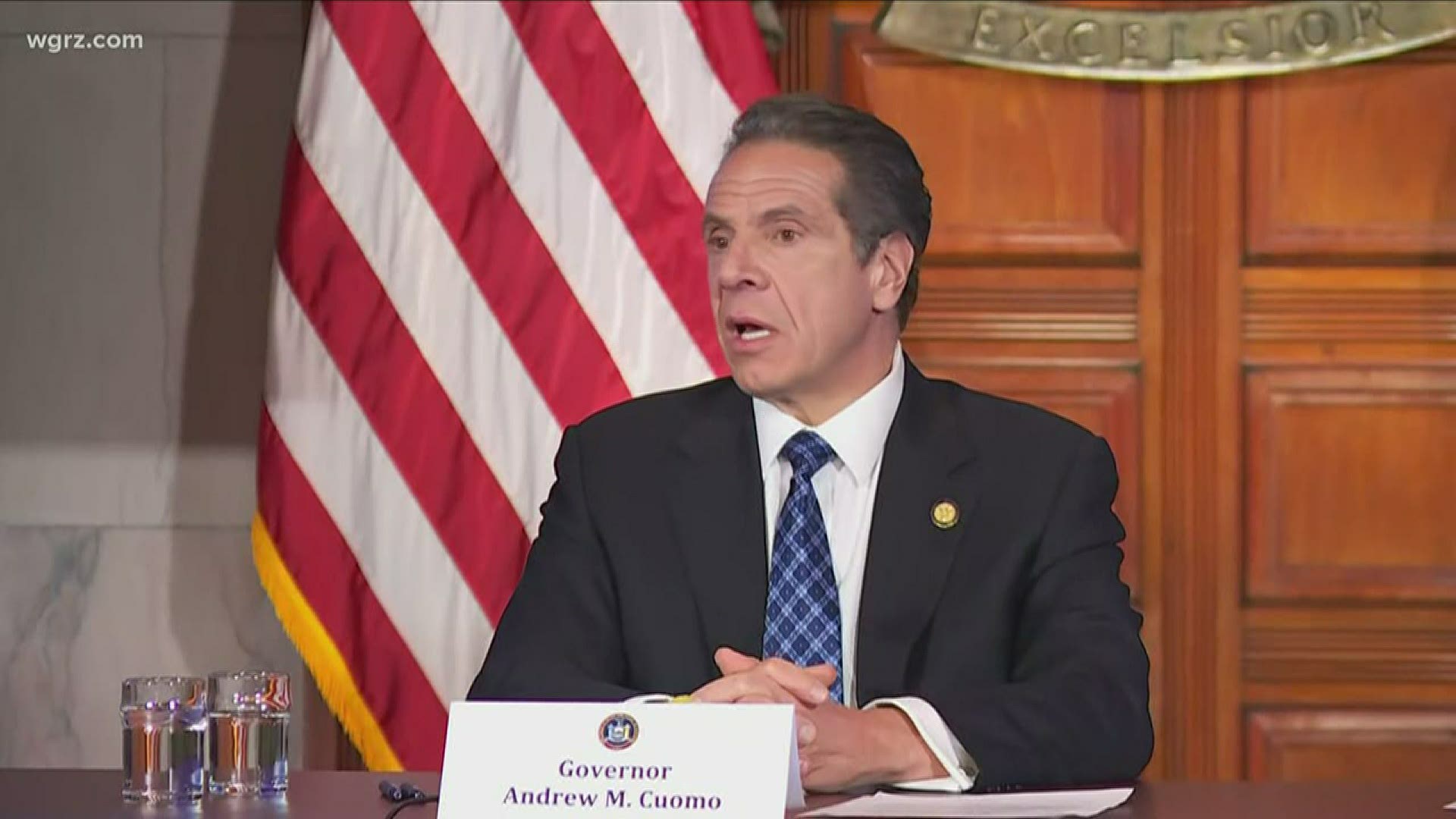ALBANY, N.Y. — New York Governor Andrew Cuomo announced Friday that the number of people dying from COVID-19 is going down, but not fast enough.
422 New York State residents died Thursday from COVID-19 related illness.
The net change in hospitalizations and intubations continues to go down, as well as the number of new COVID-19 patients going to the hospital.
Officials are now looking into how and when the state can reopen. If residents don't continue social distancing and other mitigation when the state reopens, we could have another spike in cases, Cuomo said.
The governor also talked about research that indicated there were 28,000 cases of COVID-19 in the United States in February, including 10,000 in New York State, even though a travel ban from China was initiated in early February. He said research shows the virus was spreading wildly in Italy in February, and travel was not restricted from Europe until mid-March.
Cuomo also said the research shows the NYS strain of coronavirus came from Europe, most likely from Italy.
Next week, the state will begin to look at its finances. Cuomo says New York State will have revenue shortfall of $13.3 billion. Revenue is projected to be $61 billion during the years 2021-2024.
Cuomo says New York will rebuild, not what was, but better and smarter. He says they're looking at better healthcare, better transportation and smarter telemedicine.
Coronavirus symptoms
The symptoms of coronavirus can be similar to the flu or a bad cold. Symptoms include a fever, cough and shortness of breath, according to the Centers for Disease Control.
Most healthy people will have mild symptoms. A study of more than 72,000 patients by the Centers for Disease Control in China showed 80 percent of the cases there were mild.
But infections can cause pneumonia, severe acute respiratory syndrome, kidney failure and even death, according to the World Health Organization. Older people with underlying health conditions are most at risk.
The CDC believes symptoms may appear anywhere from two to 14 days after being exposed.
Human coronaviruses are usually spread through...
- The air by coughing or sneezing
- Close personal contact, such as touching or shaking hands
- Touching an object or surface with the virus on it, then touching your mouth, nose or eyes before washing your hands.
Help stop the spread of coronavirus
- Stay home when you are sick.
- Eat and sleep separately from your family members
- Use different utensils and dishes
- Cover your cough or sneeze with your arm, hot your hand.
- If you use a tissue, throw it in the trash.
Lower your risk
- Wash your hands often with soap and water for at least 20 seconds. If soap and water are not available, use an alcohol-based hand sanitizer.
- Avoid touching your eyes, nose, and mouth with unwashed hands.
- Avoid close contact with people who are sick.
- Clean and disinfect frequently touched objects and surfaces.
- If you are 60 or over and have an underlying health condition such as cardiovascular disease, diabetes or respiratory illnesses like asthma or COPD, the World Health Organization advises you to try to avoid crowds or places where you might interact with people who are sick.


